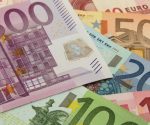Lofty goals in Roadmap to Waste Management

PHILIPSBURG -- “Sint Maarten is a clean and sustainable island, based on the principles of a circular economy. The waste situation is fully under control with minimum impact to the environment and in line with international best practices.” This is part of the government’s vision of the situation it aims to achieve by 2022 - 32 to 44 months from now (from the beginning to the end of 2022).
The Court in First Instance ordered the government in September 2018 to produce a roadmap explaining how it intends to prevent future fires and the emission of hazardous smoke at the landfill. Citizen Barbara Cannegieter, attorney Camiel Koster and the law office BZSE initiated the lawsuit to force the government to finally do something meaningful about the persistent fires at the dump on Pond Island.
The Roadmap to Waste Management the government later submitted to the court contains some lofty targets that require a Herculean effort to become a reality within the given timeframe. The report speaks of “maximum sorting, re-use and recycling of waste-materials,” exporting part of the waste and burning the rest in a yet to be constructed waste-to-energy incinerator - an option that is described as “the best option.”
Furthermore, the report states that “the landfill is covered and not operational anymore for regular waste. “The emissions are under control, the odor issue is solved and the produced methane can be used for electricity production.”
So far, all this seems neatly in line with the demands Cannegieter c.s. outlined in last year’s lawsuit, be it that nothing will be solved within three months as the plaintiffs demanded. The lawsuit is still dragging on, with the government filing one motion after the other, all reporting progress and emphasizing that there is no quick solution.
The long-term goal, the roadmap states, is to recycle 60 percent of the waste-stream by separating seven types of garbage: trees, vegetation and lumber; glass; paper and carton; plastics; waste oil and cooking oil from garages, restaurants, bars and hotels; and garbage from cruise ships.
The idea is to accept cruise ship garbage only after the implementation of a waste management system, based on the separation of garbage-types as described above. “In the meantime cruise ships should temporarily stop bringing waste to the island.”
Garbage-types earmarked for export are car wrecks and car batteries; household appliances; steel, zinc and aluminum (including cans); household hazardous waste; car tires; and boats. Electronics waste is to be collected via retailers.
Another pipedream in the Roadmap is listed under the heading Quality Public Areas. “The goal in 2022 is that there is no litter on the streets, parks, ponds, beaches and other public areas.” This requires the government “to control public spaces with an enforcement tool” and to implement a high maximum fine for littering.
Awareness is high by 2022 according to the Roadmap: “All inhabitants are proud of Sint Maarten and the cleanliness of the island.” Considering the mess Carnival revelers left behind on the streets, there is a lot of work to be done in this respect. The intention is to ban single-use plastics and Styrofoam. “All restaurants, hotels and bars have implemented bio-degradable containers for food and drink.”
The Roadmap furthermore speaks of the establishment of a Waste Authority, “a well-funded government-owned body at arm’s length of the government with its own authority and budget.”
The waste regulations, “as part of the VROMI-ordinance” are updated in line with international conventions, the Roadmap envisions. Here we come to a crucial part of the whole idea: money. The government envisions a waste levy (for private citizens and for companies) and a tipping fee at the landfill. In other words: citizens, businesses and waste collection companies will have to pay to get rid of their garbage.
The so-called follow-up project for waste management is going to cost millions, to be provided from the World Bank trust fund. A first tranche of $1.3 million is earmarked for “sector review and reform.” Under this heading all the money goes to studies, analyses, institutional capacity building and workshops. Another $34 million is required for implementation; the lions’ share ($29 million) is for infrastructure and equipment while $1 million is needed for the closure of the Pond Island dump site.
The timeframe listed at the end of the roadmap contains a few interesting details. One: by September 2018, the Memorandum of Understanding with Canada-based Envirogreen (at the time initiated by former Minister Christophe Emmanuel) will be terminated; to our knowledge, there have been no reports that this has been done in the meantime.
Another interesting point and a possible deal breaker with any party interested in building a waste-to-energy facility is the price the government is prepared to pay for the electricity from this source: $0.18 per Kwh. The now abandoned Envirogreen-proposal mentioned a price of $0.26 per Kwh, while, according to a 2016 working Paper of the International Monetary Fund the average price for producing electricity in the Caribbean is $0.29. According to St. Maarten’s National Energy Policy - published in 2014 - GEBE produces electricity at $0.22 per Kwh.
There is a $10 million budget for fire suppression on the current landfill. According to the Roadmap, these fires can be under control between July and August of this year.
The ban on single-use plastics and the implementation of bio-degradable single-use packaging material should be in place by July 2019 - according to the roadmap. This requires legislation, communication with stakeholders, an awareness campaign and implementation and enforcement. July is just eight weeks away.
The establishment of the Waste Authority is scheduled for September 2019 - seventeen weeks from now - and the collection of a tax on garbage collection should begin in January 2020.
LOGIN TO READ MORE... THIS IS A PREMIUM ARTICLE. YOU NEED AT LEAST YEARLY SUBSCRIPTION TO ACCESS THIS ARTICLE.
...
Some articles or portions of articles are restricted exclusively for our registered members and paying subscribers. Please login here to read the rest of this article. If you do not already have a paid subscription, you will need to register here and pay for a subscription first in order to gain access to our website to read articles or contents that are restricted to paid subscribers. You need to buy at least a Day subscription for 75ct to gain access. Or log in first if you are already a registered paying subscriber to this website. Click here to register and support our work with a paid subscription.


























